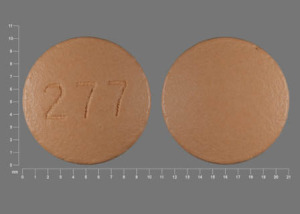Sitagliptin Side Effects
Applies to sitagliptin: oral tablet.
Serious side effects of Sitagliptin
Along with its needed effects, sitagliptin may cause some unwanted effects. Although not all of these side effects may occur, if they do occur they may need medical attention.
Check with your doctor immediately if any of the following side effects occur while taking sitagliptin:
Less common
- Anxiety
- blurred vision
- chills
- cold sweats
- confusion
- cool, pale skin
- depression
- dizziness
- fast heartbeat
- headache
- increased hunger
- loss of consciousness
- nausea
- nightmares
- seizures
- shakiness
- slurred speech
- unusual tiredness or weakness
Incidence not known
- Agitation
- blistering, peeling, loosening of the skin
- coma
- decreased urine output
- diarrhea
- hives or welts, itching, or skin rash
- hostility
- irritability
- large, hive-like swelling on the face, eyelids, lips, tongue, throat, hands, legs, feet, or sex organs
- lethargy
- loss of appetite
- muscle twitching
- pains in the stomach, side, or abdomen, possibly radiating to the back
- puffiness or swelling of the eyelids or around the eyes, face, lips, or tongue
- rapid weight gain
- red skin lesions, often with a purple center
- redness of the skin
- severe joint pain
- sores, ulcers, or white spots in the mouth or on the lips
- stupor
- swelling of the face, ankles, or hands
- vomiting
Other side effects of Sitagliptin
Some side effects of sitagliptin may occur that usually do not need medical attention. These side effects may go away during treatment as your body adjusts to the medicine. Also, your health care professional may be able to tell you about ways to prevent or reduce some of these side effects.
Check with your health care professional if any of the following side effects continue or are bothersome or if you have any questions about them:
More common
- Body aches or pain
- cough
- difficulty with breathing
- ear congestion
- fever
- loss of voice
- muscle aches
- sneezing
- sore throat
- stuffy or runny nose
Less common
- Diarrhea
- stomach pain
For Healthcare Professionals
Applies to sitagliptin: oral tablet.
Metabolic
Common (1% to 10%): Hypoglycemia (when used in combination with insulin or sulfonylurea)[Ref]
Gastrointestinal
Common (1% to 10%): Abdominal pain, nausea, diarrhea, constipation, gastroenteritis
Postmarketing reports: Acute pancreatitis, including fatal and non-fatal hemorrhagic or necrotizing pancreatitis, vomiting, mouth ulceration, stomatitis, constipation[Ref]
In a pooled analysis of 19 trials (sitagliptin 100 mg/day, n=5429; active control or placebo, n=4817), the incidence of acute pancreatitis was in 0.1 per 100 patient-years in each group (4 patients in each group)[Ref]
Respiratory
Common (1% to 10%): Nasopharyngitis, upper respiratory infection, pharyngitis,
Postmarketing reports: Interstitial lung disease[Ref]
Nervous system
Common (1% to 10%): Headache
Uncommon (0.1% to 1%): Dizziness[Ref]
Hypersensitivity
There have been postmarketing reports of serious hypersensitivity reactions in patients treated with this drug. Reactions have occurred within the first 3 months of therapy initiation, with some reports occurring after the first dose.[Ref]
Postmarketing reports: Serious hypersensitivity reactions including anaphylaxis, angioedema, rash, urticaria, cutaneous vasculitis, and exfoliative skin conditions including Stevens-Johnson syndrome[Ref]
Hepatic
Postmarketing reports: Hepatic enzyme elevations[Ref]
Renal
There have been postmarketing reports of worsening renal function, including acute renal failure, sometime requiring dialysis. A subset of these reports involved patients with renal insufficiency, some who were prescribed inappropriate doses of this drug. With drug discontinuation, supportive treatment and discontinuation of potentially causative agents, a return to baseline levels of renal insufficiency occurred.[Ref]
Postmarketing reports: Worsening renal function[Ref]
Musculoskeletal
Between October 2006 and December 2013, thirty-three cases of severe arthralgia have been reported to the FDA Adverse Event Reporting System Database. Each case involved the use of 1 or more dipeptidyl peptidase-4 (DPP-4) inhibitors. In all cases, substantial reduction in prior activity level was reported, 10 patients were hospitalized due to disabling joint pain. In 22 cases, symptoms appeared within 1 month of starting therapy. In 23 cases symptoms resolved less than 1 month after discontinuation. A positive rechallenge was reported in 8 cases, with 6 cases involving use of a different DPP-4 inhibitor. Sitagliptin had the greatest number of cases reported (n=28) followed by saxagliptin (n=5), linagliptin (n=2), alogliptin (n=1), and vildagliptin (n=2).[Ref]
Postmarketing reports: Arthralgia, myalgia, extremity pain, back pain, osteoarthritis, rhabdomyolysis, severe and disabling arthralgia[Ref]
Cardiovascular
Common (1% to 10%): Hypertension[Ref]
Dermatologic
Postmarketing reports: Pruritus, bullous pemphigoid[Ref]
General
The most commonly reported adverse events included upper respiratory tract infection, nasopharyngitis, and headache. As add-on to insulin studies, hypoglycemia was commonly reported.[Ref]
Frequently asked questions
More about sitagliptin
- Check interactions
- Compare alternatives
- Pricing & coupons
- Reviews (153)
- Side effects
- Dosage information
- During pregnancy
- Drug class: dipeptidyl peptidase 4 inhibitors
- Breastfeeding
- En español
Patient resources
Other brands
Professional resources
Other brands
Related treatment guides
References
1. Cerner Multum, Inc. UK Summary of Product Characteristics.
2. Product Information. Januvia (sitagliptin). Merck & Co., Inc. 2006.
3. Cerner Multum, Inc. Australian Product Information.
4. US Food and Drug Administration. FDA Drug Safety Communication: FDA warns that DPP-4 inhibitors for type 2 diabetes may cause severe joint pain. http://www.fda.gov/downloads/Drugs/DrugSafety/UCM460038.pdf 2015.
Further information
Always consult your healthcare provider to ensure the information displayed on this page applies to your personal circumstances.
Some side effects may not be reported. You may report them to the FDA.

